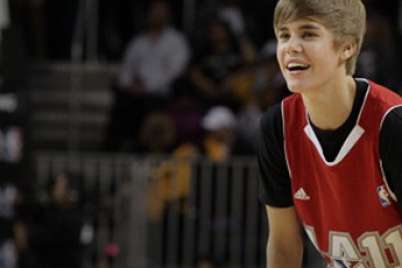
Physical literacy checklist: 6-9 years
The development of physical literacy is an ongoing process throughout childhood. During the early elementary school years, children should be refining their fundamental movement skills and starting to develop some basic sport skills. You can explore different activities with your child to develop some of these skills.
1. Striking sports
Striking is the act of hitting an object – such as a ball – with either your hand or a tool – such as a racquet, bat, or stick. As a skill, it demands the ability to track an object in the air or on the ground. It’s an essential skill for sports such as baseball, hockey, volleyball, tennis, badminton, and many more.
Tip: With minimal investment in basic equipment, your can introduce your child to simple striking activities at home (like a plastic ball and bat, plastic street hockey stick, and so on). See which types of activities might appeal to her, and then consider registering her for introductory programs in sports such as tennis, hockey, baseball, and volleyball.
2. Dribbling sports
Dribbling skills are key to sports such as basketball, soccer, and hockey. In each instance, dribbling refers to the ability to manipulate and redirect the movement of the ball or puck with small, controlled touches of the hand, foot, or stick. Dribbling is really about fine motor skills, and these skills only develop through practice and repetition.
Tip: Your child can practice dribbling skills at home with her own basketball, soccer ball, or hockey stick and ball. When selecting an introductory program in one of these sports, make sure that the program emphasizes the development of these skills. At this age, skills are far more important than winning.
3. Gymnastics
For pre-adolescent children, gymnastics remains one of the best activities for overall development of agility, balance, coordination, strength, and flexibility. It incorporates a wide variety of movement skills to make it perfect for “one-stop shopping” in physical literacy.
Tip: Children’s gymnastics programs don’t usually feature competition, and your child doesn’t need to aspire to compete at the Olympics. Most kids have fun with basic gymnastics, and if you want one program that develops a wide range of core skills, gymnastics is it.
4. Skiing
Skiing costs more than most activities, but if you are able to manage it, this is the age to get your kid to the slopes. Children between six and eight learn quickly as their low centre of gravity makes it relatively easy for them to balance on skis. Skiing could also be your child’s gateway to getting involved in a variety of other winter “sliding” sports such as snowboard, cross-country, and luge.
Tip: Ski resorts offer low-cost introductory one-day ski programs for kids that include the cost of their lessons, equipment, and lift ticket.
5. Swimming
If you started your child in introductory swim lessons in preschool, hopefully she has kept up with swimming either through school or with subsequent lessons at your local recreation centre. Again, it’s not necessary to be aiming for an Olympic gold medal. Earth’s surface is 75% water, so she’s sure to find a use for those swimming skills sometime.
Tip: Keep your child in swimming lessons until you’re confident she is safe in the water. If she decides to chase an Olympic dream, that’s nice too, but it’s not a decision you need to worry about.
6. Skating
Like swimming, skating continues to be a good core skill set for the average Canadian child. It doesn’t matter whether or not your child pursues figure skating, hockey, ringette, or speed skating. Her skating skills will allow her to forever enjoy an activity that promotes fitness, balance, and coordination, whether on ice skates or roller blades. Skating is also a great social activity for children and teens in rinks across the country.
Tip: Like swimming, look into beginner skating programs at your local recreation centre, and take the family to occasional public skates at the rink to practice your skills. And have fun.






Hi,
Could you please share PL Checklist for ages 10 to 15 as well. Thank you
Do you have a physical literacy checklist for running,walking, and jumping.?
i,m looking for a checklist for that physical literacy for my study.
Hi Katyrine,
Check out the following resources: activeforlife.com/resources/
Thanks, Leigh
A wonderful article!! It is so important that the kids explore the physical vocabulary through various movements with a consciousness.
How about the ability to follow dance steps, stay on beat, and predict what steps are coming next?
Thanks for pointing this out, Parvathi — the ability to follow dance steps and stay on beat is a very important part of physical literacy, and one that is often overlooked. Dance and rhythmical movement really strikes at the heart of what we call “the ABCs of movement” — agility, balance, coordination, and speed. These are considered the foundation of physical literacy. The best test of whether or not a child has developed rhythm of movement would be actually to play a piece of music that is unfamiliar to the child, and then observe whether or not the child is able to accurately “connect” their movements with the rhythm, as opposed to whether or not they can master a prescribed set of dance steps or “rehearsed formula”. For a great humorous example of this, watch the movie “Dance with Me” where the male Cuban character is seen dancing freestyle at a salsa club. When his highly-trained American dance partner angrily says to him, “I thought you said you couldn’t dance”, he replies, “Of course I can dance! I’m Cuban! I just can’t dance the way that you dance ….” We observe that he is a far better dancer than she is, even though she attends competitions and wins awards for correctly executing rehearsed dance routines.